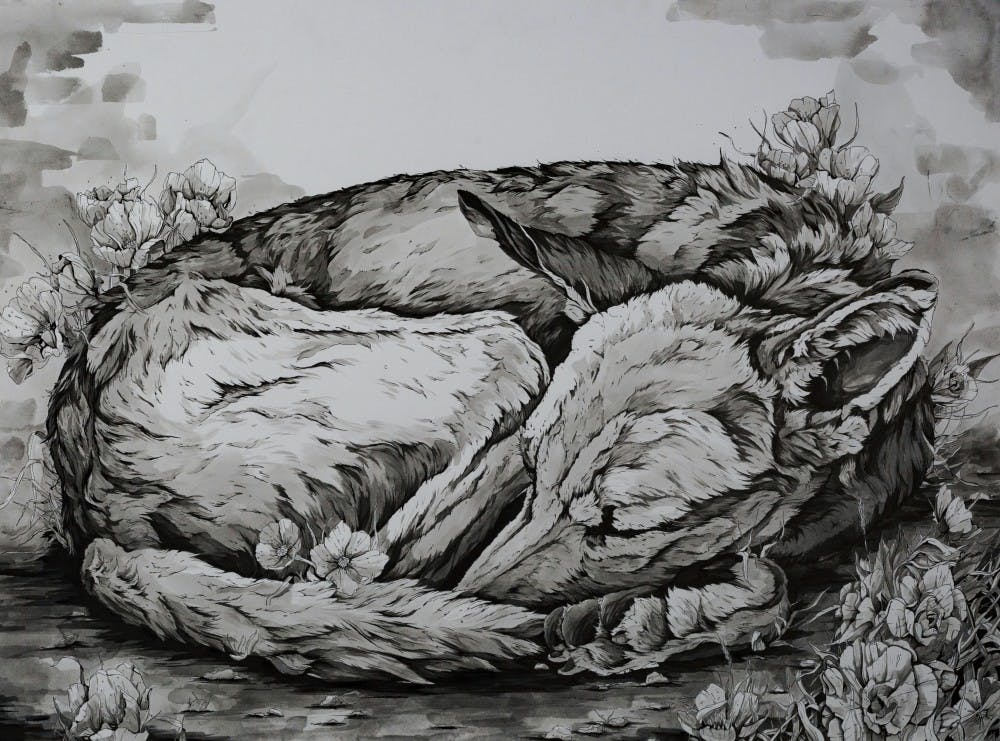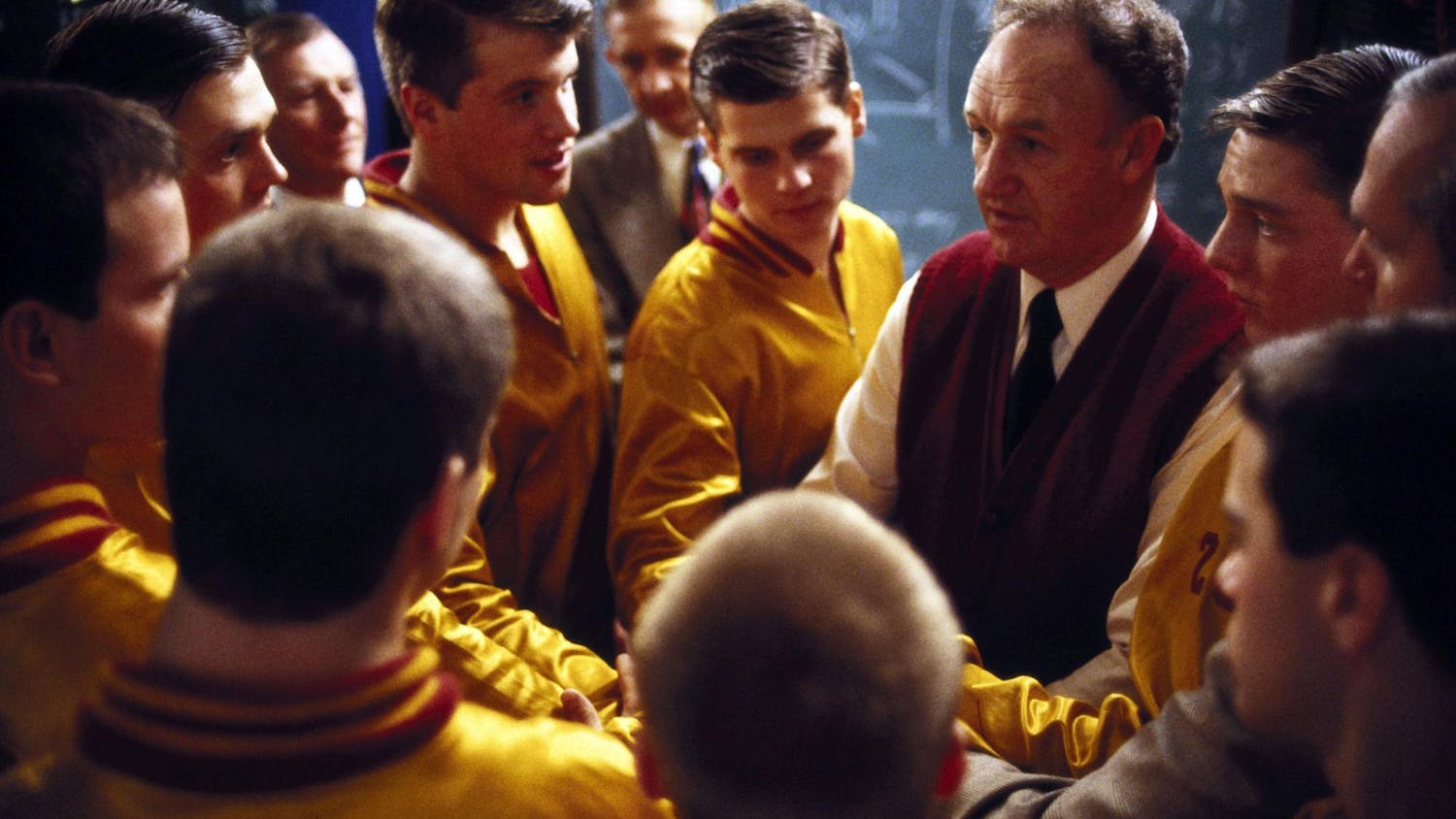Alexander Landerman is a master of fine arts printmaking student with the School of Art, Architecture + Design.
Growing up on a Christmas tree farm in a small town in Wisconsin, Landerman was surrounded by the outdoors. He fell in love with animals at a young age and began drawing around the same time.
Landerman graduated from the University of Wisconsin, Stevens Point with a degree in two-dimensional art and is scheduled to graduate from IU’s masters program this spring. The Indiana Daily Student talked with Landerman about the inspiration for his art and what he plans to show this spring in the MFA Thesis Show.
Indiana Daily Student: What is your artistic focus?
Landerman: I’m interested in animals, and my work focuses on animal ethics, kind of how intelligent animals truly are and why we view animals the way we view them and how we treat them.
What do you hope people see when they look at your drawings?
It’s all about engagement and question asking. Aesthetically, the work should be attractive to help people engage. It is always the goal to make an attractive, pretty thing people will want to look at, then get them to ask the question of ‘what is happening here and why?’ It’s never my intent to be accusatory or say ‘look what you’re doing.’
Can you give me an example of a current piece you’re working on that asks the “what is happening and why" question?
I have this piece that I’m doing, it's a bunch of herons. The whole bottom of the frame is filled up with these herons and they kind of reach their way up. There’s these swirling leaves going on, and then when you look at the leaves, you can see that some of them are actually fishing lures, the kind that look like little fish. I hope that somebody would look at these kind of frantic birds that are clearly moving and engage with it. The imagery is exciting, and then they ask ‘what’s going on here?’ They’re carnivorous, so it's a danger to these birds because there are these fishing lures. That is a jumping off point there, which could lead to a conversation or inspire research. That’s really my goal.
Where did you get the inspiration for the herons?
They’re these predator animals. That doesn’t mean they’re smart, so when they find something and don’t know what it is sometimes they eat it, and then they die. I’m all for land being public and people being able to utilize that land. Although I don’t fish or hunt or do those things, those practices are the reasons we have money to devote to the welfare of animals. It is important to me that those things persist, but some people who do it don’t clean up after themselves the way they should. If you leave stuff there, that could kill a bird. Also, there’s just something so alluring about herons. They’re weird water ostriches.
Are these animal subjects coming from real-life experiences?
The heron piece started as I was walking my dog by Miller-Showers Park, that weird little water area by Square Donuts on 17th. I saw them in the pond and ran home, put the dog in the house, grabbed my camera and ran back. There was just a heron hanging out by the water. I must have took 200 photos of him with a camera. Now I have this informed drawing.
Can you tell me more about your work process?
I was always kind of a Luddite. I was going to draw pen and ink on paper, but recently I’ve gotten more interested in digital processes. What I’ve been doing now is I’m drawing everything digitally. With a tablet I can do my own illustrations just how I would on paper. Then, when I print them out on a big stencil banner printer, I have this nice sketched-out drawing on pristine paper. I always joke that I’m not a good illustrator, I’m just really persistent. I draw and erase and draw and erase a lot.
How many pieces will you have at the MFA Thesis Show at the end of the semester?
I’ll have five. The heron is mostly done, and then I have these falling birds that I’m working on right now, and those are halfway there. I have a couple sketches in progress, stuff with coyotes, codfish and this deer sketch that I’ve been working on forever.






